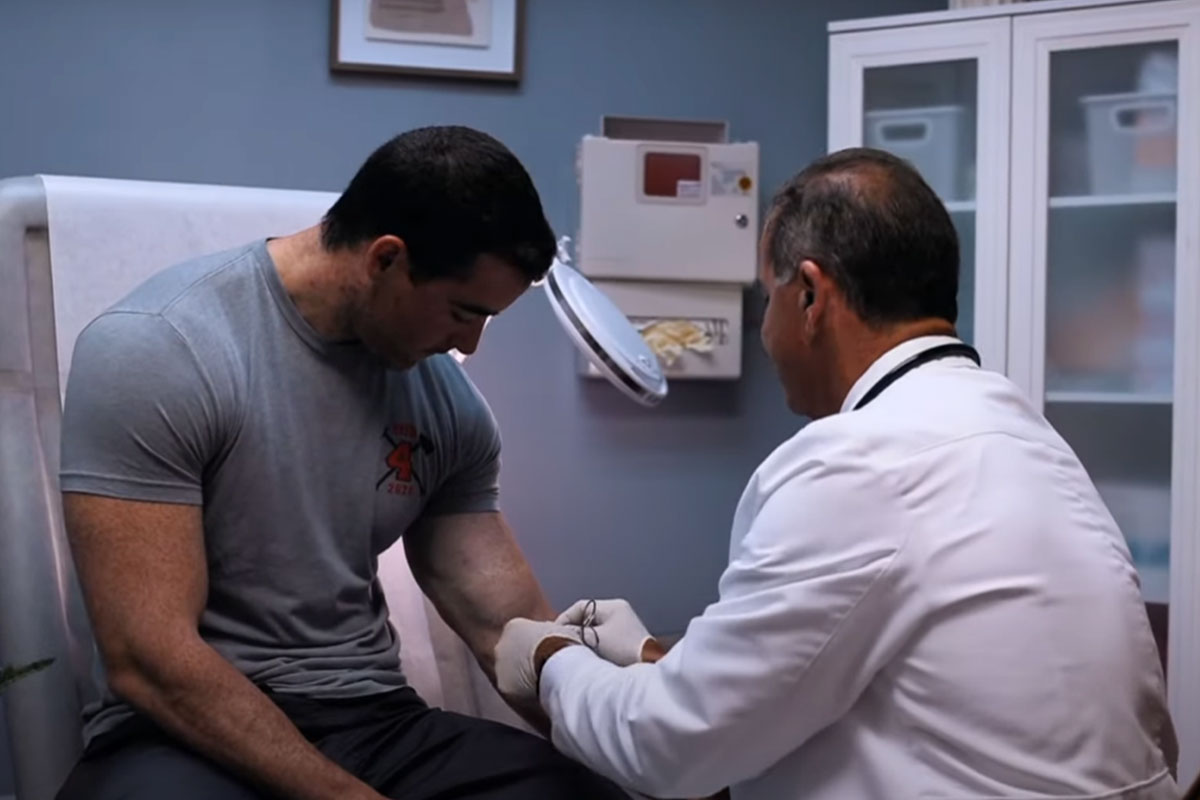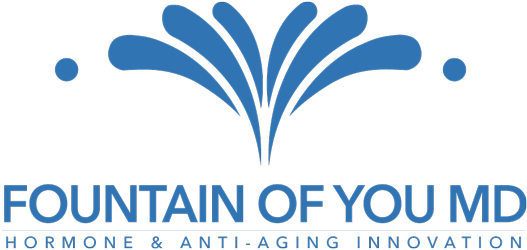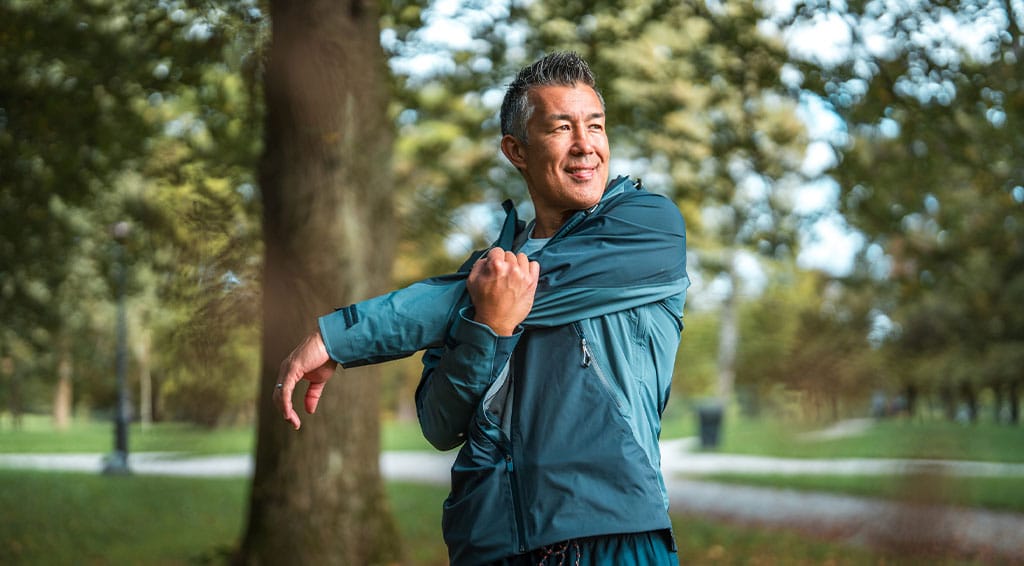If you’re considering or already starting testosterone therapy, you’re probably wondering, ‘How long does testosterone take to work?’ You’ll start to feel the effects within a few weeks, including improved energy levels, mood, and libido. Over the next few months, you’ll see physical changes like increased muscle mass and strength. Long term benefits like bone density and cardiovascular health take 6-12 months. Here’s the detailed timeline of what to expect.
Key Points
- Testosterone replacement therapy (TRT) requires initial screening, including lab work, to establish baseline health metrics and identify potential risks.
- Early effects of TRT: Enhancements in mood, libido and energy can be seen within weeks, physical benefits like muscle mass within months.
- Long term commitment to TRT is crucial. Stopping treatment can make your symptoms of low testosterone (and potential health concerns) return, so regular monitoring and follow-ups are essential for sustained benefits.
Initial Consultation and Screening

Before starting testosterone replacement therapy (TRT) an initial consultation and screening is required. At a reputable clinic such as Fountain of You MD, this phase includes hormone tests to establish a baseline for future comparisons. Blood tests check pituitary function and testosterone levels before therapy. Screening also includes health assessments to rule out potential complications.
Hematocrit levels should be measured at baseline to check for polycythemia within normal range. For men over 40, baseline prostate specific antigen levels should be checked to rule out prostate cancer before starting therapy.
Routine checkups will help adjust dosages and ensure effective treatment throughout the hormone replacement therapy.
Early Effects of Testosterone Therapy
Testosterone therapy officially begins once the provider has reviewed the consultation and screening results, and confirms the patient is eligible for treatment. Early effects of testosterone supplementation / testosterone replacement therapy (TRT) are typically highly anticipated by the patient, as testosterone therapy can improve mood, energy, libido and muscle mass. The different TRT benefits become visible over time.
Within the first few weeks many notice significant changes. Changes in sexual interest are noticeable within a few weeks into treatment. Improvements in improved insulin sensitivity can be seen within a week, which contributes to better glycemic control and energy.
Libido and Sexual Function
One of the first effects of testosterone therapy is the improvement in libido and sexual function. Many men notice improvements in blood flow and sexual function within two weeks of treatment. By week two, many experience increased sexual drive and morning erections.
Sex drive rebalances within three weeks to 30 days of starting therapy. Quality and frequency of erections improve around three weeks, which help with sexual performance and overall satisfaction.
Many men seek out TRT as it can potentially address ED and sexual medicine issues.
Energy and Mood
Another early benefit of testosterone therapy is the increase in energy and mood. Many report significant quality of life improvements within a few weeks of treatment that may help mitigate issues related to low testosterone levels. By the end of the first and second month, significant increases in testosterone production and daily energy output can be seen.
Depressive symptoms become noticeable after three to six weeks of therapy, contributing to emotional stability and reducing feelings of tension, anger, fatigue, mental fatigue and decreased energy. These changes are often accompanied by morning energy and further improvements by the third month of therapy, making daily activities more manageable and enjoyable.
Medium Term Benefits of Testosterone Replacement Therapy
As therapy continues, medium term benefits appear between three to six months. This phase is marked by significant physical and mental improvements, including enhanced red blood cell formation overall. Patients report increased energy and stamina during this phase.
Benefits include continued improved sexual function, physical strength, and mental and emotional well-being. By three to six months, cognitive function and emotional stability may be seen, along with a reduction in body fat, better mental clarity, and reduced feelings of sadness and anxiety.
Muscle Mass and Strength
Testosterone therapy can increase muscle strength and mass within 12 to 16 weeks. Significant muscle mass increase typically occurs with proper testosterone administration in the first 12 months of therapy. These changes contribute to overall body composition improvements, increased lean mass, and decreased fat mass – especially with testosterone and testosterone enanthate.
By month three you can expect less effort for workouts, quicker results, and reduced recovery time. This phase is where the benefits of increased muscle mass and physical performance become more apparent, leading to a more active and healthier lifestyle.
Insulin Sensitivity and Glycemic Control
Insulin sensitivity can improve shortly after starting therapy, often within a few days. Notable improvements in insulin sensitivity may be seen within a week. By the end of the third month, individuals often experience better glycemic control and insulin resistance, important for overall health and managing diabetes.
Triglycerides can decrease within four weeks to three months, contributing to better cardiovascular health. Total cholesterol levels typically decrease between four weeks to three months of therapy, further supporting long term health benefits.
Long Term Results of Testosterone Treatment
Long term results of testosterone therapy are amazing; benefits unfold from six months to several years. Full benefits are typically seen between six months to a year, with significant improvements in many areas.
Stopping therapy can cause low testosterone symptoms to come back, along with mood fluctuations. Long term stopping can affect bone density, muscle mass, hormone deficiency, testosterone deficiency and male hypogonadism, so commitment and ongoing management is key.
Bone Density and Body Composition
Bone mineral density is a key focus of testosterone therapy and oral testosterone supplementation (though testosterone injections are generally preferred due to their superior absorption and more consistent hormone levels). These improvements are seen after six months and can last up to three years. Increased bone density contributes to overall health and reduces risk of osteoporosis and fractures.
Body composition improvements, lean muscle growth and lean body mass typically start after six months of therapy. These compounding benefits in bone density and body composition lead to significant improvements in overall health and muscle healing, making individuals stronger and more resilient.
Cardiovascular Health and Blood Pressure
Testosterone replacement therapy has been shown to support cardiovascular health in men with low testosterone levels. By improving factors such as blood pressure, lipid profiles, and insulin sensitivity, studies suggest that TRT can contribute to a healthier heart and vascular system. Enhanced endothelial function and reduced inflammation are additional benefits that help promote better blood flow and reduce cardiovascular risks.
Regular blood tests and checkups are essential to maintain benefits and monitor potential health issues. Conditions such as venous thromboembolism, which can arise during therapy, underscore the importance of consistent oversight. Consistent monitoring helps to address any emerging health concerns.

Overall, TRT can be an important component of maintaining and improving cardiovascular health in men experiencing testosterone deficiency.
Cognitive Health
In addition to physical health, TRT can positively influence decision-making and critical thinking. Many individuals report noticeable cognitive and continued emotional improvements around 12 months into therapy.
Factors Affecting the Timeline of Results
Timeline of results can vary significantly based on individual health metrics and overall health. Genetics, lifestyle and age play a big role in how fast and effective therapy works.
Patient preference for therapy modalities can improve adherence to treatment. Consistent therapy leads to stable hormone levels, maintaining more energy, mood and physical health.
Medication Type and Dosage
Most common and effective treatment options:
- injections
- implantable pellets
Other options include:
- tablets
- patches
- gum
- nasal gels
The type of medication can affect how fast results are seen. Higher doses can lead to quicker changes in effects.
Testosterone injections provide a more reliable and effective delivery of exogenous testosterone compared to oral forms, which can be less efficient and may pose additional strain on the liver. This makes injections the standard treatment for many men requiring hormone replacement therapy.
Route of administration, intramuscular, subcutaneous or topical can affect onset of action and side effects. Long-acting formulations can provide more stable hormone levels compared to short acting ones. Monitoring is needed to maintain stable levels and minimize side effects.
Lifestyle and Genetics
Genetics can affect how individuals metabolize testosterone results. Factors that affect response to therapy are age, baseline testosterone levels, genetics and overall health.
A diet that is high in healthy fats can boost testosterone levels. Sleep deprivation or sleeping 5 hours or less a night can decrease testosterone levels. These lifestyle habits are important for optimizing benefits.
Side Effects and Monitoring
Testosterone therapy has many benefits but not without side effects. Common side effects of testosterone injections include skin reactions, mood swings, sleep disturbances, and changes in libido. Blood pressure monitoring is essential as therapy can cause hypertension. A major contributor to a decrease in libido and impaired sexual function in both men and women is Human Growth Hormone (HGH) Deficiency.
Patients should have their normal testosterone levels and overall health checked regularly by their healthcare provider. Serious allergic reactions require immediate medical attention, so ongoing supervision and monitoring is key.

HGH with Testosterone Replacement Therapy
HGH plays a crucial role in maintaining overall vitality, muscle mass, and metabolic functions, which indirectly influence sexual health. Deficiency in HGH can lead to symptoms such as decreased energy, increased body fat, reduced muscle strength, and poor mood, all of which may contribute to reduced libido and sexual performance. Addressing HGH deficiency alongside testosterone therapy can sometimes provide a more comprehensive approach to restoring sexual function and improving quality of life. It is important to consult with a healthcare provider to evaluate hormone levels comprehensively and develop an individualized treatment plan that may include HGH supplementation if appropriate.
Long-Term Therapy
Testosterone replacement therapy is a long-term commitment. If therapy is stopped, testosterone levels will go back to pre-treatment levels and previous low testosterone problems will come back. This is why long-term commitment is necessary.
Long-term success requires ongoing medical supervision, regular blood work and potential dosage adjustments for high blood pressure. Commitment to therapy along with regular monitoring and follow-up is essential for the best results, especially for those dealing with erectile dysfunction.
Conclusion
In summary, testosterone therapy is a journey where the benefits unfold over time. From initial consultation and early effects to medium term benefits and long-term outcomes, understanding the timeline and managing expectations is important.
By committing to long-term therapy and regular monitoring, individuals can see significant improvements in energy, mood, sexual performance, muscle mass and overall health. The promise of renewed vitality and well-being is within reach, so it’s worth the journey.
To book your initial labs and consultation, contact Fountain of You MD today!
Frequently Asked Questions
How soon can I see improvements in sexual function after starting testosterone therapy?
You can see improvements in sexual function as early as 2 weeks after starting testosterone therapy, with more significant changes usually within 3-4 weeks.
What are the early signs that testosterone therapy is working?
Increased libido, better mood, and more energy are early indicators that testosterone therapy is working, usually seen within the first few weeks of treatment.
How long until you see improvements in muscle mass and strength?
Muscle mass and strength improvements are usually seen within 12-16 weeks of starting a training program or therapy, with continued progress over the first year. Consistency is key to maximum results.
Can testosterone therapy improve my insulin sensitivity?
Yes, testosterone therapy can improve insulin sensitivity, usually within a few days to a week, with more significant improvements by the end of 3 months.
Is testosterone replacement therapy a lifelong commitment?
Testosterone replacement therapy is a long-term commitment, if stopped symptoms of low testosterone will come back. So ongoing treatment is necessary to maintain benefits.



